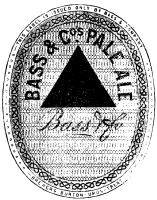

The History of Trade Marks
Evidence of using markings to distinguish ownership, either as the property owner and/or its manufacturer, dates back to ancient times. Initially, it has been thought that these marks were used to indicate ownership of livestock. Marks then progressed to being used by craftsmen to identify goods they had made and guarantee their quality, these being widely used in Egypt, Greece and reaching a height during the Roman Empire.
Rapid change in the time between the fall of Roman Empire and Renaissance
The purpose of marks changed rapidly in the period between the fall of the Roman Empire and the Renaissance. At first being used to protect the consumer by identifying the maker, they spread to associating a maker with a guild and protecting the monopolies of the guilds. Gradually, marks were recognised as beneficial to the maker, by carrying their reputation with the goods. In a time when advertising was considered unfair, the property value of marks was recognised. In 1266, the earliest law on trade marks was passed in England, the Bakers Marking Law. Statutes were passed in 1353, which enabled traders who had fallen victim to piracy to prove ownership from marking on the goods. Unfortunately, a trader would need to prove that the particular mark was in fact capable of distinguishing his goods from those of other traders, in order for any action to take place. In 1363 a law was passed making it mandatory for the use of assay and makers marks by English silversmiths. The link between these 'merchant marks' and modern commercial marks is considered to be a case in 1618, Southern v How, which was the first reference to trade mark infringement.
The world's first legal register of marks
In the period preceding the Industrial Revolution, the first trade mark cases were followed by legislation. Trade marks were classed as legal property and consumers began to recognise brand names. The British Trade Marks Registration Act of 1875 is often, and wrongly, claimed to be the world's first legal register of marks, whereas in France in 1857 the 'Manufacture and Goods Mark Act' established a trade mark deposit system which persisted in various forms until it was repealed in 1964. In the United States the first Federal statute for trade mark registration based upon the Copyright clause of the Constitution was passed in 1870 and the first registered mark was granted to Averill Paints. However, this statute was short-lived and repealed by the Supreme Court as unconstitutional, and a new statute was passed by Congress in 1881 based upon the Commerce clause of the Constitution.

In 1876 the Trade Marks Registry opened in London on 1 January when it received the first application for what became Trade Mark No. 1, the famous BASS & CO Red Triangle label, now owned by Brandbrew S.A.
Registration established the mark as a trade mark and identified who owned it, granting the owner exclusive rights to use the mark and the right to take infringement action against unauthorised use. In 1883 the first international trade mark treaty was reached at the Paris Convention for the Protection of Industrial Property, with convention countries agreeing to afford foreign owners the same protection as they provide for their own nationals. In 1883, 1905 and 1938 further trade mark legislation was introduced in the United Kingdom. Some familiar trade marks registered at this time include Coca Cola in 1887, Mercedes in 1900 and Gillette in 1908.
Trade Marks Act 1994
Prior to 1994, various amendments were made to the 1938 Act which introduced the registration of service marks (Trade Marks Amendment Act 1984) and classified the forgery of a trade mark as a criminal offence (Copyright, Designs and Patents Act 1988). The current legislation, the Trade Marks Act 1994 as amended, introduced recommendations by the government review of trade marks conducted in 1974, the Mathys report. It greatly simplified and accelerated the processing of trade mark applications, and brought the UK into line with EU and international laws. Modern trade marks are no longer limited to words and flat visuals, but can be 3-D, a sound, a colour or a smell.
EU Council Regulation (EC) No. 207/2009
The first Council Regulation governing the registration of trade marks as Community trade marks resulted in many tens of thousands of applications receiving the first filing date of 1 April 1996. There is no doubt that this system of a single Community trade mark registration, being effective throughout the whole of the EU, has met with great success. For any owner wishing to protect its mark in two or more EU countries a Community application is usually the most cost-effective route.
International Registration under the Madrid Protocol
Since 1995 the UK is among ninety countries that have signed up to the Madrid Protocol which enables trade mark owners to extend protection of their home registrations to any number of those countries by filing a single application for International Registration designating the countries where the trade mark is to be protected. This can be a most cost-effective route for overseas trade mark protection, especially in major foreign markets such as China, Japan, India, Korea, Australia, Russia, Switzerland and the USA.